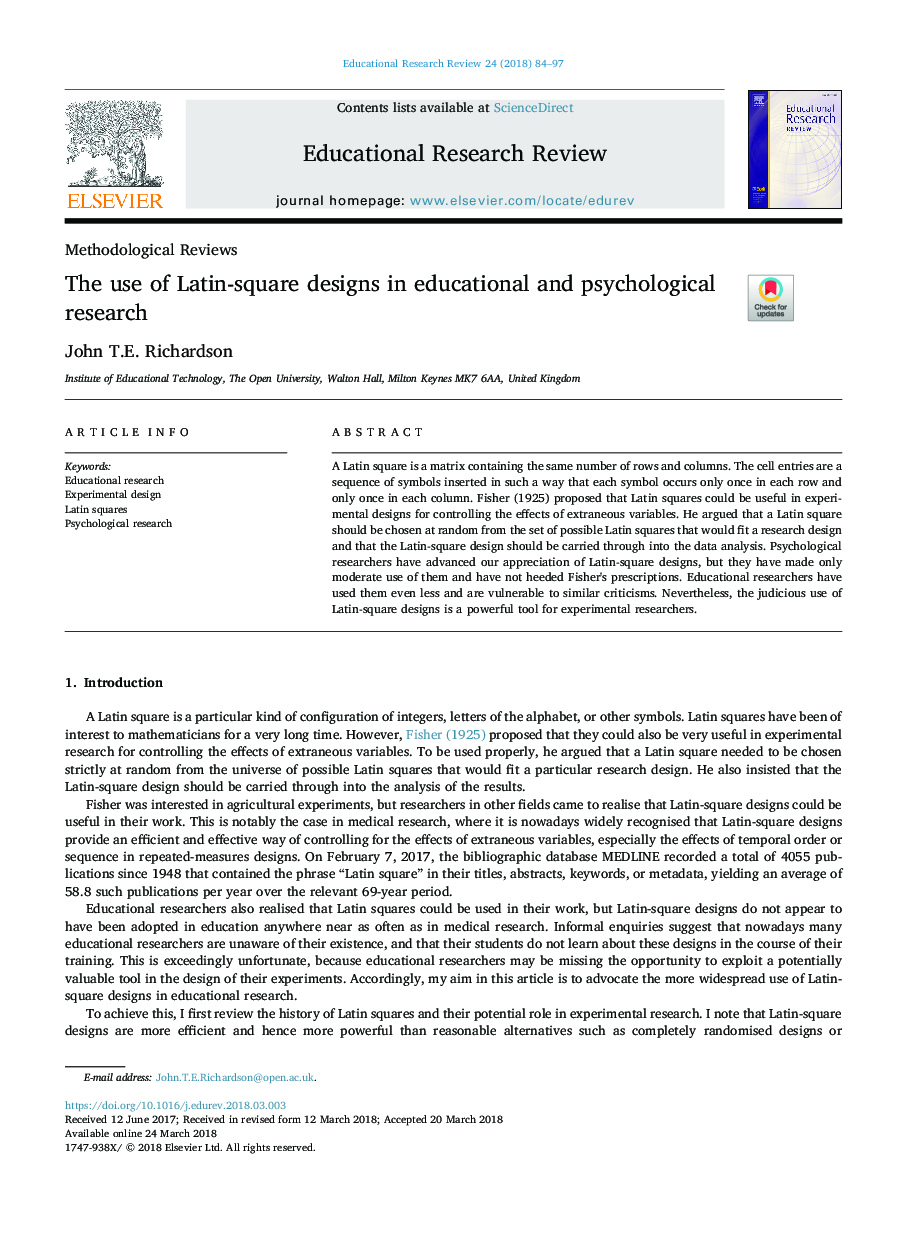| Article ID | Journal | Published Year | Pages | File Type |
|---|---|---|---|---|
| 6840960 | Educational Research Review | 2018 | 14 Pages |
Abstract
A Latin square is a matrix containing the same number of rows and columns. The cell entries are a sequence of symbols inserted in such a way that each symbol occurs only once in each row and only once in each column. Fisher (1925) proposed that Latin squares could be useful in experimental designs for controlling the effects of extraneous variables. He argued that a Latin square should be chosen at random from the set of possible Latin squares that would fit a research design and that the Latin-square design should be carried through into the data analysis. Psychological researchers have advanced our appreciation of Latin-square designs, but they have made only moderate use of them and have not heeded Fisher's prescriptions. Educational researchers have used them even less and are vulnerable to similar criticisms. Nevertheless, the judicious use of Latin-square designs is a powerful tool for experimental researchers.
Related Topics
Social Sciences and Humanities
Psychology
Developmental and Educational Psychology
Authors
John T.E. Richardson,
